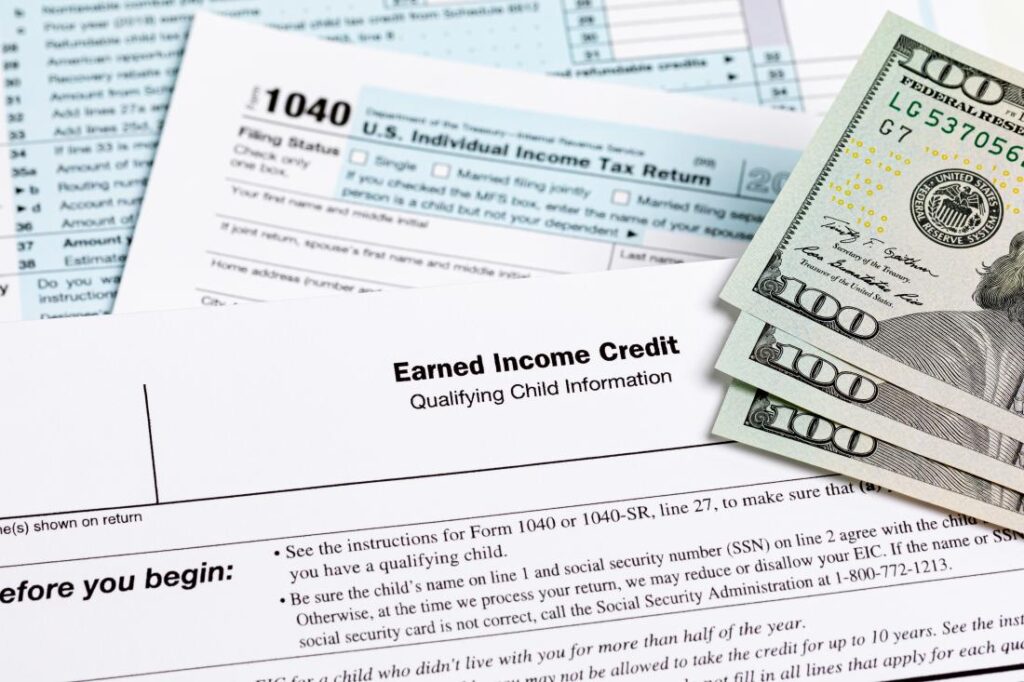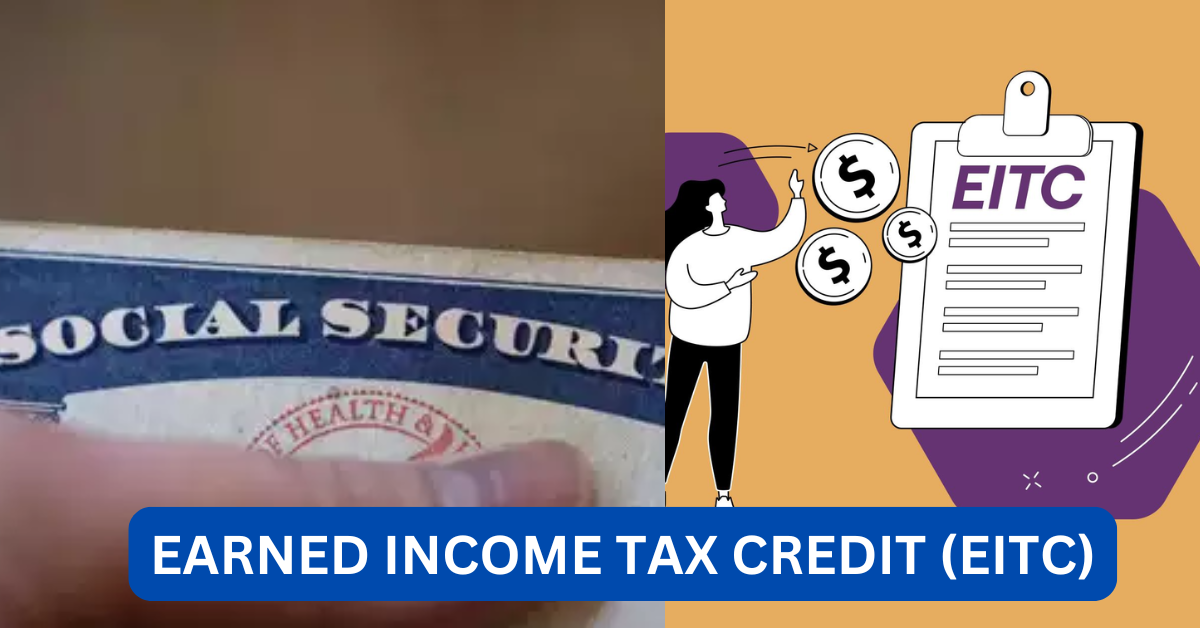The Earned Income Tax Credit (EITC) is a key financial benefit for workers with low to moderate incomes. Designed to reduce tax burdens and increase refunds, this credit can provide significant relief to eligible taxpayers. Here’s what you need to know about the EITC, how to qualify, and how to claim it.
What is the Earned Income Tax Credit (EITC)?
The EITC helps reduce the amount of taxes owed or increases refunds for eligible individuals and families. For the 2024 tax year, the EITC offers credits ranging from $649 to $8,046, depending on your income level and the number of children you claim.
Last year, around 23 million families claimed this credit, receiving over $57 billion in total benefits.
Meeting the Criteria for the Earned Income Tax Credit (EITC)
The Earned Income Tax Credit (EITC) is a vital tax benefit designed to help low-to-moderate-income workers and families. To qualify, you must meet specific guidelines set by the Internal Revenue Service (IRS). Here’s a comprehensive guide to understanding the eligibility criteria, income limits, and how to claim the EITC for the 2024 and 2025 tax years.

Eligibility Requirements for the EITC
To qualify for the EITC, you need to meet the following conditions:
- Earned Income:
- You must have earned taxable income from employment, running a farm, or managing a small business.
- Social Security Number:
- You and all qualifying family members must have valid Social Security numbers issued on or before the tax filing deadline.
- Filing Status:
- Married individuals filing separately are not eligible for the EITC.
- Income Limits:
- Your investment income must not exceed $11,600 for 2024 (or $11,950 for 2025).
- Your adjusted gross income (AGI) must be below the thresholds outlined in the tables below.
EITC Income Limits for 2024 Tax Year (Deadline: April 15, 2025)
| Number of Children | Max Earnings for Singles, Heads of Household, and Married Filing Separately | Max Earnings for Joint Filers | Maximum EITC |
|---|---|---|---|
| 0 | $18,591 | $25,511 | $632 |
| 1 | $49,084 | $56,004 | $4,213 |
| 2 | $55,768 | $62,688 | $6,960 |
| 3+ | $59,899 | $66,819 | $7,830 |
EITC Income Limits for 2025 Tax Year (Deadline: April 2026)
| Number of Children | Max Earnings for Singles, Heads of Household, and Married Filing Separately | Max Earnings for Joint Filers | Maximum EITC |
|---|---|---|---|
| 0 | $19,104 | $26,214 | $649 |
| 1 | $50,434 | $57,554 | $4,328 |
| 2 | $57,310 | $64,430 | $7,152 |
| 3+ | $61,555 | $68,675 | $8,046 |

Qualifying Children Criteria
The number of qualifying children directly affects the amount of EITC you can claim. To qualify as dependents:
- Age:
- Children must be under 19 by the end of the tax year, or under 24 if they are full-time students.
- Permanently disabled children have no age limit.
- Residency:
- The child must live with you for more than six months of the year.
- Relationship:
- The child must be your biological child, stepchild, foster child, grandchild, or certain other relatives.
Special Rules for Married Children
If your child is married, they can only qualify if they do not file a joint tax return (except for a refund claim).
Claiming EITC Without Children
- You must be between 25 and 64 years old.
- No one else can claim you as a dependent.
Unique rules apply to individuals with disabilities, clergy members, ministers, and military personnel.
How to Claim the Earned Income Tax Credit
- File a Tax Return:
- You must file a tax return, even if your income is below the threshold requiring you to do so.
- Forms to Avoid:
- You cannot claim the EITC if you file Form 2555 or 2555-EZ for foreign-earned income.
- Use the IRS EITC Assistant:
- The IRS provides an online EITC Assistant to help determine your eligibility and calculate your credit.
- Review Your Credit Amount:
- Use worksheets included with Form 1040 instructions or a trusted tax preparation service to ensure accuracy.
- Documents You’ll Need:
- Valid Social Security numbers for you, your spouse (if applicable), and your children.
Additional Savings Through the Child Tax Credit
If you’re eligible for the EITC, you may also qualify for the Child Tax Credit, which provides further financial relief to families with children.
When Will Refunds Be Issued?
The IRS cannot issue EITC refunds before mid-February due to federal rules aimed at reducing fraud. If you file early, you can expect your refund around February 27, 2025.
EITC for Childless Taxpayers
If you don’t have children, you can still qualify for the EITC, but the rules are slightly different. You must:
- Live in the U.S. for at least six months of the year.
- Not be claimed as a dependent on someone else’s tax return.
- Meet the age and income requirements mentioned above.
Additional Tips and Resources
- State-Level EITC:
Some states offer additional EITC benefits based on a percentage of your federal credit. Check your state’s tax website for more details. - IRS Assistance:
The IRS offers free resources, including the EITC Assistant Tool, to help you determine your eligibility.
Final Thoughts
The Earned Income Tax Credit is an invaluable benefit for working individuals and families with low to moderate income. To make the most of it:
- Confirm your eligibility based on the latest IRS guidelines.
- File your tax return accurately, and ensure you include all qualifying dependents.
- Use a trusted tax preparation service or software to maximize your refund and minimize errors.
With proper planning, the EITC can significantly boost your financial well-being. Don’t miss the opportunity to claim it!
This article has been carefully fact-checked by our editorial team to ensure accuracy and eliminate any misleading information. We are committed to maintaining the highest standards of integrity in our content.
Filza specializes in simplifying financial topics for everyday readers. Whether breaking down Canada’s tax guides or U.S. benefits like SNAP and VA Disability, Filza’s relatable writing style ensures readers feel confident and informed. Follow her insights on LinkedIn or reach out via email at shewrites.health@gmail.com.









